Getting Started
Table of Contents
Understanding Your Dog's Journey!
Your baby has gone through A LOT. He was either living on the streets as a stray, constantly searching for food, trying to stay safe, fighting off illnesses and parasites and figuring out who to trust; or he was in a shelter, eating and pooping in the same small area and not knowing his fate.
Houston shelters are nothing like you are used to. It is not unusual for a “shelter” to consist of chain link cages in a field covered with a tarp or an outbuilding with no heat or air conditioning. Multiple dogs are often housed together and have an average of 3-7 days to find a home before being euthanized, and that’s IF the shelter even does adoptions.
Once a dog is committed to by PHR, they spend a short 7-10 days in a Houston foster home. Then they are loaded onto a van with dozens of other animals and spend a stressful 36 hours driving up to Washington. When they arrive, there are more strangers, baths, nail trims, meds, and then off to yet another new home with their Spokane foster family. Some dogs are in their Spokane fosters for a few days and some for weeks or months before they make their way to you.
It’s not a perfect system, but it’s better than the alternative.
We detail all of this to let you know how important it is to give your new baby some grace and space during this time of transition. I know your family is excited and so ready to show your new kid all that his new life has to offer, but if your baby isn’t warming up to you immediately, that’s ok! Giving him a few days of patience and space will show your dog that you are good people. He will quickly learn that he can trust you and you will become his whole world.
Helping Your Dog Feel at Home
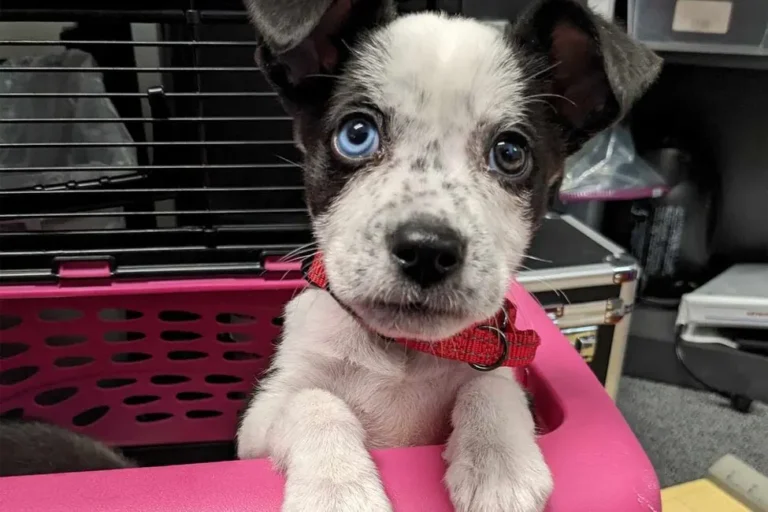
This journey has undoubtedly been stressful for your dog. It’s crucial to understand that they may need time to adjust to their new environment and build trust with you.
Patience is Key, Don’t worry if your dog doesn’t immediately shower you with affection. Give them space and time to decompress.
Show Kindness, Your patience and understanding will help your dog feel safe and secure in their new home.
Rule of Three
When adopting a dog

Days
Your dog is trying to figure out their new home & family

Weeks
They’ve figured out they live with you & start a routine

Months
Your dog has become a part of the family. Welcome Home!
Most Importantly: give your dog a little time, don’t throw in the towel!
Enjoy your new Best Friend!
Introducing Adult Dogs to Your Existing Pack
If you have other dogs at home, introducing your new arrival requires careful planning.
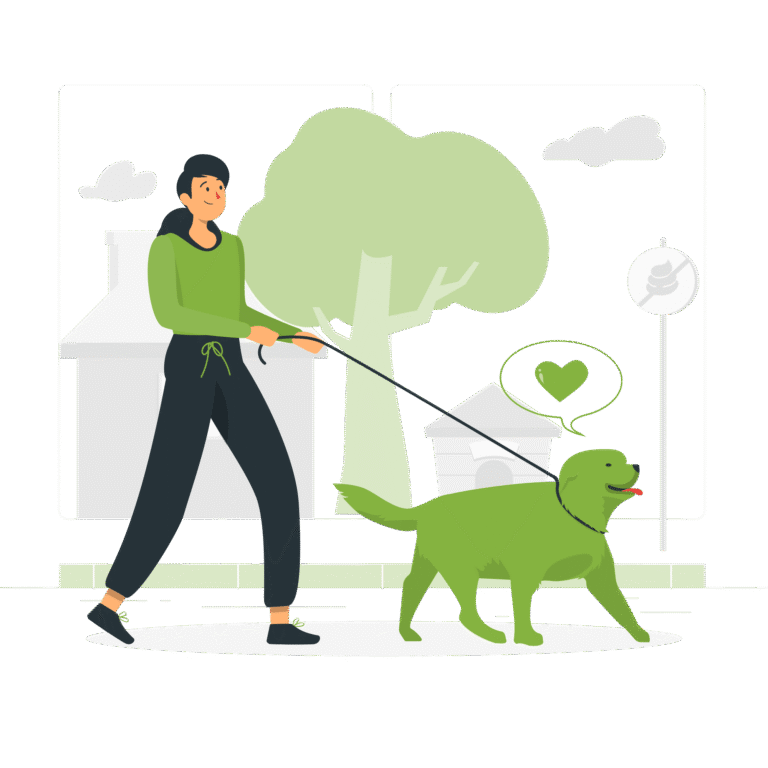
Initial Walk
Start with Distance – Begin walking on opposite sides of the street and gradually narrow the gap as your dogs become more comfortable walking together as a pack.
Pack Walk – Observe your dogs. A successful pack walk is characterized by calm behavior, with dogs focused on the walk rather than their surroundings, Aim for at least a two-mile walk.
Controlled Introductions & Inside the Home
Yard Greetings – Allow the dogs to meet in the front yard.
Nose-to-Tail – Encourage nose-to-tail greetings, as nose-to-nose encounters can sometimes lead to conflict, Keep all dogs leashed, but ensure the leashes are loose to avoid tension.
Introductions of Adult Dogs
Introducing an adult dog into an existing Pack should be done with care. Taking the time to do this right can set up your whole pack for success and an easy transition.
We recommend taking your new dog and existing Pack on a walk immediately, before you even go into your house. You will need an additional person, so plan accordingly.
Do not allow the dogs to meet. Start off on opposite sides of the street and walk in the same direction. Once you see your dog’s transition into pack walk mode, you can start narrowing the gap. Pack walk can be identified when all the dogs are more engaged in the walk itself than the environment around them. You will see head down, ears back and eyes focused ahead.
Continue narrowing the space between your new dog and your pack until everyone is calmly walking next to each other. If there is too much excitement, widen the gap and try again in a few blocks. We recommend at least a two-mile walk.
When you arrive back home, allow the dogs to meet in the front yard. An appropriate dog ‘greeting’ is always NOSE TO TAIL. Do not allow your dogs to meet nose to nose, this can initiate a fight. Also take care to make sure all dogs are leashed but with NO tension.
Once everyone has met and you are satisfied with initial greetings, you can go in the house, calmly. We recommend allowing your new dog to drag a leash for the first 2 days. This is annoying for her and you but is the safest way to ensure you could grab your dog if there were any problems.
Potty Training Your New Puppy
Bringing a new puppy into your home is an exciting time! However, potty training can be one of the biggest challenges. It takes patience, consistency, and an understanding of your puppy’s needs.
With a solid routine, plenty of positive reinforcement, and the right approach, your pup will get the hang of it—and you’ll build a stronger bond along the way.
This guide will give you the knowledge and tools to make the process smoother and more successful!

Understanding Your Puppy’s Needs
Establishing a Routine
Frequent Breaks: Take your puppy outside every 1-2 hours, especially after meals, naps, and playtime.
Consistency is Key: A predictable schedule helps your puppy learn when and where to go
Pick a Spot: Choose a designated potty area outside so your puppy can associate that spot with bathroom time.
Potty Training Your New Puppy Step by Step
- Watch for Signs: Sniffing, circling, whining, or squatting are cues your puppy needs to go
- Act Fast: As soon as you notice these signs, take them to their potty spot.
- Stay Calm: Be patient and allow your puppy to focus without distractions.
- Celebrate Success: When they go in the right spot, reward them with praise, treats, or playtime!
- Prevent Accidents: Keep an eye on your puppy, and when unsupervised, confine them to a small, safe space.
Housebreaking your puppy is going to be the activity that consumes your life for the next several months. Your schedule, his schedule, when he eats, sleeps, and poops is your new normal.
This doesn’t have to be hard. By working with a dog’s natural instincts, keeping a strict schedule, and using a crate, you will drastically shorten the time required for potty training.
Dogs don’t like to sleep where they poop. As young as two weeks old you will observe puppies army crawling their little bodies away from the comfy warmth of momma and their littermates to go potty somewhere else and then crawl back to where they were sleeping.
It is innate and natural. Puppies will continue this behavior, preferring to go potty in one place and sleeping in another place as they grow older.
A puppy’s digestive system is very efficient and regular. You can expect a puppy to poop within one to two hours after eating, every time, without fail. Combining these naturally ingrained behaviors with crate training makes your job as a new puppy parent much easier.
Most important is keeping your puppy on a schedule: wake up, pee and poop, play, eat, sleep. Rinse and Repeat.
A crated puppy will wake up and alert you right away that they are awake and need to go out; listen for that whining or barking, they are communicating with you! With very young puppies, eight to twelve weeks, take them out immediately because depending on how long they’ve been crated, their little bladders can’t wait very long. Open the back door, THEN go open the crate door and run outside. Do not carry them. They will naturally run after you. They will immediately pee and most likely poop.
You will need to walk with your puppy outside, throwing them out the backdoor and expecting them to understand what you want, will not work. Wait outside WITH them but be silent and still, puppies are easily distracted. If they are cold or you are being impatient, then they will want to come back in before they are done.
Be patient and they will poop! Wait until they are completely finished and then immediately throw the biggest praise party ever!! Timing is key. If you praise as soon as they start, a puppy can get distracted and stop without fully emptying their bladder, wait until they are completely done. You have 1-2 seconds after they finish to praise them, or they will not associate the action with the praise.
You have now started the potty clock over.
Now it’s playtime! This is the perfect time to play with your puppy or take them on a walk or out to see the world. After an hour, take him outside to potty again. After two hours, you will find that your puppy is already ready for a nap. Puppies sleep A LOT. Don’t feel bad about enforcing naps. They are growing so fast and furious that they need the sleep and you need a break!
His crate should be a happy place, like a comfy bedroom. One of the ways to help him associate his crate with positive things is to feed him inside of it. When he’s ready for breakfast, put the food in the back of the crate and he will naturally go inside. Close the door slowly, you don’t want him to feel tricked, but most likely he won’t care cause he’s busy chomping away on breakfast. Now is the time to WALK AWAY.
Your puppy might settle right down and sleep or he might throw the biggest pity party you’ve ever heard. DO NOT give in! We cannot stress this enough! If you give in and let your puppy out, he will learn to manipulate you and cry and cry because he knows you will give in.
You are setting a precedent, be strong!
Crate Training
If your puppy takes more than 30 minutes to stop crying before going to sleep, try moving his crate to a different part of the house. Some dogs like to be in the middle of the family action and can relax better when they see their hoomans, and some dogs prefer to be in a quiet, dark bedroom with the door closed. Some like to see out and some like a blanket over their crate so they can shut the world out.
It’s OK to experiment with different areas and options, but either way, they need to nap and learn to be calm in a crate. This will also give you a much-needed reprieve and allow you to relax as well. Puppies, like toddlers, spend much of their time trying to kill themselves. Puppy’s nap time will also mean momma gets some time to relax.
Your puppy will naturally wake up in one to two hours and then you can start the whole cycle over again. Wake, pee and poop, play, eat and sleep.
Puppies six months and under get three naps and three meals a day;
Puppies over six months get two naps and two meals a day.
We’ve raised almost 1000 puppies. Here is our tried and true schedule for young pups. The times can be shifted to whatever work best for your family, but stick with the same order and routine: wake, pee and poop, play, eat and sleep.
Crate Training for Potty Success
- Make It Cozy: A crate should be a safe, comfortable place, never a punishment. Feeding meals in the crate can help create positive associations.
- Start Small: Begin with short crate sessions and gradually increase the duration.
- Leverage Instincts: Since puppies avoid soiling their sleeping area, crate training can support potty training efforts.
Daily Schedule for Potty Training
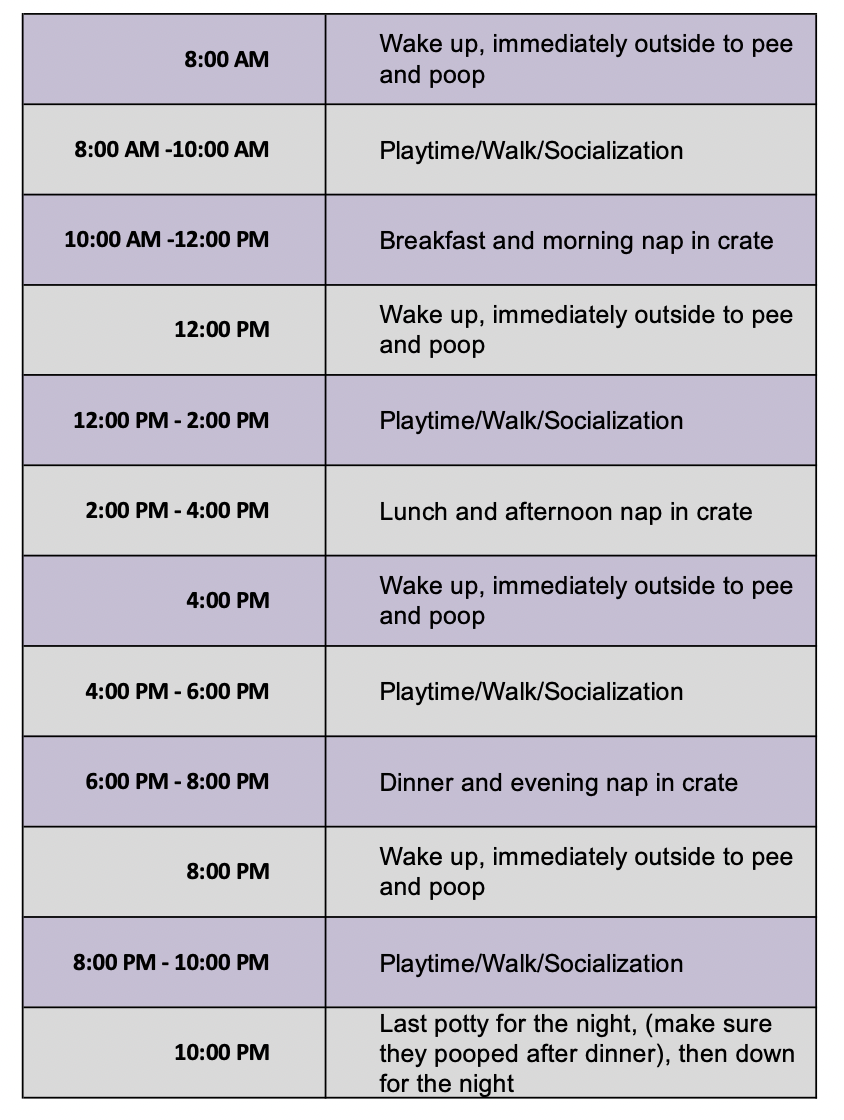
A puppy can hold their bladder approximately one hour for every month they are old and double that at night. For example, an eight-week-old puppy will only be able to hold his bladder four hours and will need to be taken out during the night.
Follow the same wake up rules as before. Open your back door, then open the crate door, run outside, and wait outside with your puppy. I know standing outside in the cold and dark, in your PJ’s is the last thing you want to do in the middle of the night, but remember the more consistent you are, the faster your puppy will catch on. Do not allow any playtime; as soon as puppy has done his business, he goes right back in the crate till morning.
If your puppy is having accidents in their crates, there could be a few reasons why. Most commonly, it is because your puppy’s crate is too big. Remember how we talked about how a puppy doesn’t like to sleep where they poop? If a crate is large enough, a puppy will wake up, happily do his business on one side of the crate, and go back to sleep on the other side.
A properly sized crate will not be big enough to achieve that. Your puppy should be able to stand, turn around and lie down comfortably, but that’s it. Many wire crates come with dividers, or you could try blocking off some of the crate with a cardboard box.
Depending on your puppy’s history, there is a possibility that your puppy might need some remedial training.
A puppy who is never allowed a clean place to sleep or does not have a designated sleeping area, will have no choice but to ignore its natural urge to separate these behaviors and learn to sleep in their own feces or urine. This can happen in puppy mills, shelters, or even on the trip up from Houston, where they are crated for several days straight.
Remove all bedding. We know this seems harsh, but a blanket absorbs urine and makes it easier to ignore the mess. Forcing the puppy to lay in their own urine without the benefit of anything absorbing it, will help the puppy to be uncomfortable and want to hold their bladder longer. Once you start getting success, you can add back in a thin towel and eventually a nice cozy blanket. If they start regressing, remove the bedding again until you achieve success.
The final reason a puppy may be having accidents in their crate or in the house could be medical. Urinary tract infections, or UTIs are rare for puppies but can happen. UTI symptoms usually present as small, frequent and straining urination, licking, redness and bloody urine. If you suspect a UTI, collect a urine sample; if it is cloudy, then it is most likely a UTI. Take a fresh urine sample into your vet and they will prescribe antibiotics.
Don’t despair, they can unlearn this behavior just as easily as they learned it. Stay consistent with your schedule. If you are finding accidents in the crate, shorten your puppies crate time or go and wake them up before they have a chance to wake up on their own.
If you catch your puppy in the act of peeing or pooping in the house, make a loud noise which will usually startle them into stopping. This naturally occurs when you catch a puppy doing this anyway!
Without saying anything else and keeping your tone calm, coax your puppy to follow you outside or pick him up and take him outside. Wait patiently, the puppy will either finish his business and you can praise, praise, praise; or he will not, in which case your recourse is NOTHING. He will learn quickly that nothing happens when he goes inside, but my hooman seems to love it when I go outside!
If you find an accident after the fact, too bad. You missed your chance to teach your pup and you learned the lesson that your puppy needs more supervision. Hitting your puppy, rubbing their nose in it, or any other type of negative correction when it comes to potty training will only teach your puppy that you are mad at him for some unknown reason. Dogs cannot reason or understand that the punishment you are doling out now is connected to the potty that he did 20 minutes ago. Remember, you only have 1-2 seconds after an action to reinforce a behavior.
Finally, a puppy does not possess human emotions. we often hear an owner state, “My puppy was mad at me for leaving, so he vindictively peed on my floor or chewed my shoes. Those are human emotions. Dogs do not think or reason that way. More likely, your puppy was left unsupervised or uncrated while you were gone and hasn’t learned the house rules yet. Would you trust a toddler not to chew on things left on the floor or to tell you when he had to go pee? If your puppy is having accidents or getting into things, that is the human’s fault.
You only have a few short months of potty training. Be consistent and make an effort to enjoy this time. Because when potty training is over, so is puppyhood.
Final Tips
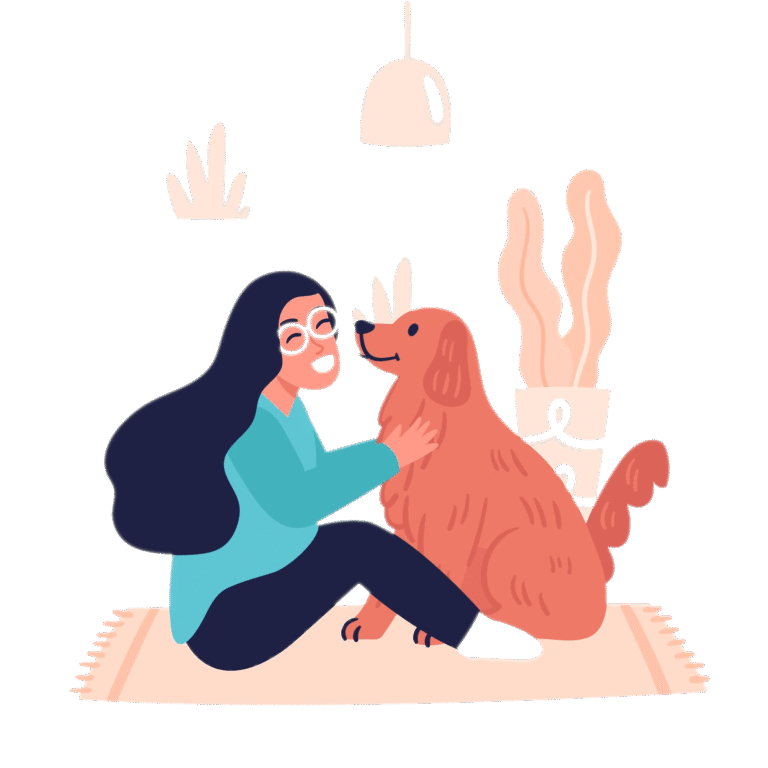
Potty training takes time, but consistency is key. The more predictable your routine, the faster your pup will catch on. Focus on rewarding the wins praise and treats go a long way in reinforcing good behavior, while accidents are just part of the learning process.
Stay patient and encouraging, and before you know it, your puppy will have it all figured out. Enjoy the journey, every step brings you closer to a lifelong bond with your new furry friend!
Let's Talk about food
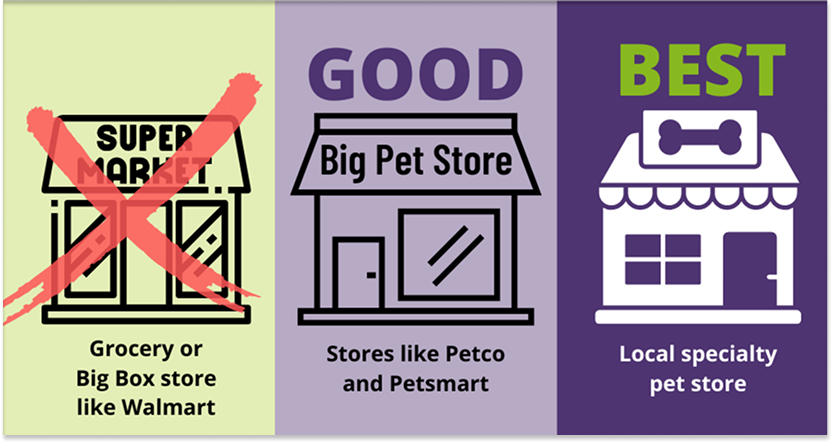
What you feed your dog is so important that it can literally extend or shorten a dog’s life. Think if you were restricted to only one food item for the rest of your life, you would want to make sure it was the highest quality and nutritious food possible!
You should have been given a few days of transition food to minimize your pup’s tummy upset. Our Rescue dogs are fed Kirkland Nature’s Domain Puppy and Kirkland Nature’s Domain Sweet Potato and Salmon. These are good, “middle of the road” foods. They are not the best and not the worst.
There are many high quality foods available, better than Kirkland.
We recommend visiting a small local pet store as these stores typically only carry high quality food and are highly vetted. You can expect to pay more per bag, however you will feed less per meal, due to less fillers, higher quality ingredients and more protein. This makes the price very comparable to less expensive options.
In the unregulated world of pet food, (almost anything) goes! A brand name does not guarantee quality.
More often, a lesser known brand is better because they prefer to pour their money into their food and not their advertising.
The first ingredient
The first ingredient of a quality food should always be a whole protein, like chicken, duck or beef. A ‘meal’ is ok farther down in the ingredient list but not as the first ingredient. Stay away from ‘byproduct’ or any food with grain as a top 3 ingredient such as rice, corn or wheat. Stay away from colored food, that has dyes added to cover up for the lack of quality ingredients.
There has been a trend in the last couple years warning people to stay away from ‘grain free’ diets. This advice is based on one FDA survey (not a study) and should not scare you away from grain-free options. If you’d like more information on this, just ask. But keep in mind, would your dog rather eat a deer or graze in a field?

Finally
Make sure to look at the label of any food your vet recommends. Veterinarians are often not well trained in animal nutrition. Additionally, they are a business and often agree to promote a certain brand in their practice.
We have a lot more resources on pet food, please don’t hesitate to reach out to your Post Adoption Counselor.


